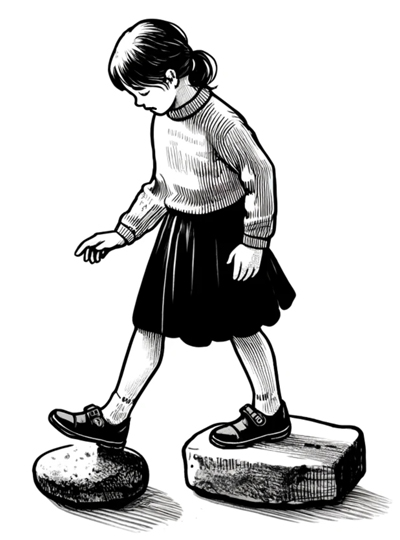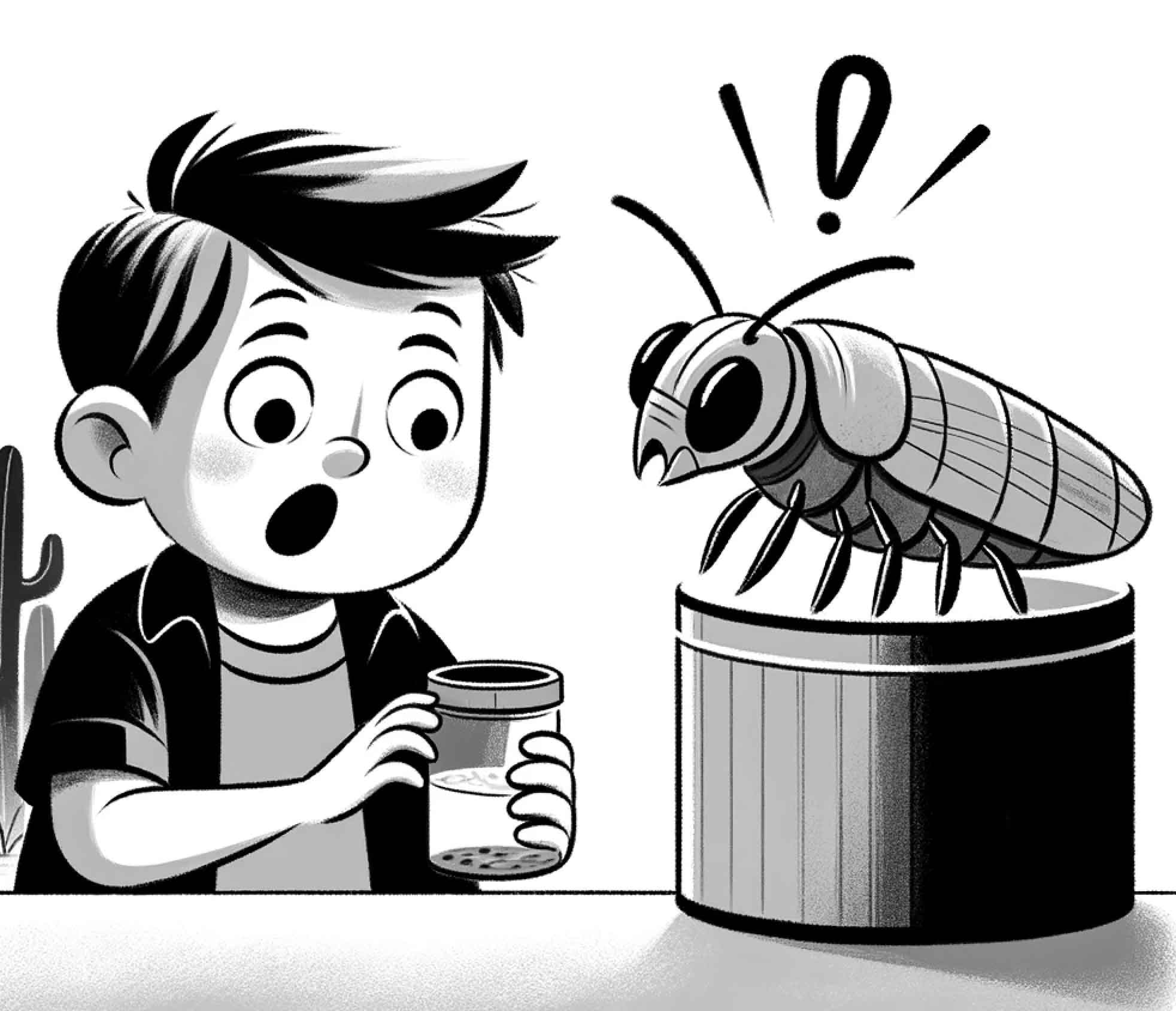Your child's anxiety about gender identity
Cast our minds back just a few years and life was a little simpler. Especially, perhaps, when it came to understanding gender identity. But fast forward to 2023, and we're in a whole new world where terms like 'gender dysphoria' and sexual identity are part of the common cultural narrative. Often without children totally understanding the terms they hear.
And like any concerned parent, this may lead you to ask the question: What if my child is anxious about their gender identity? What are the symptoms I’d notice? How would I deal with it?
Your child is bound to have heard about the topic because schools bring it up at every opportunity, whether in lessons or because of disputes.
I know a lot of parents I’ve met are up in arms about it. Not the topic but other factors, like
- the content of the discussions,
- the age your child is,
- the biased information presented, and
- non-scientific opinions frequently mixed in with factual information.
If your mind is paddling upstream right now, you're not alone.
It's worth remembering that gender dysphoria is statistically from .002% to .005% of the population. That means between 2 and 14 people per 100,000. However, the zeitgeist will get to your child either way and you need to keep a calm head!
A child's anxiety about gender identity can feel to you like you’re walking through uncharted territory – and like any new adventure, it can be a bit daunting. This is especially true if you’re not sure how much has been influenced by what they hear and how much is genuine.
But whereas I shall not deal here with what you should or should not believe or do – as that’s a personal decision to take within your family – please don't fret. I’m going to offer a starting point to helping with your child's situation.
So, what does anxiety about gender identity actually mean?

It’s become usual in the media to confuse gender identity with sex and sexual identity. This is a huge mistake as it means it’s difficult for anyone to think through the issue – and even more difficult to access useful help.
In simple terms, sex is the male or female identity you’re born into.
Of course, a few children are born “intersex”. Sometimes doctors leave this for families to figure out later which sex their child should be “made” to conform with. Other medics make that decision for you early on and perform surgery. In both cases this can become a founding factor in gender dysphoria.
But those cases apart, sex is what you’re given genitally and physiologically and can itself lead to sexual identity issues in terms of what you do compared to what society expects you to do.
Gender identity, on the other hand, is about how your child perceives and feels themselves to be inside themselves, and what they call themselves. For example, some children may express a sense of being a different gender from their biological sex early on – even if not in so many words.
This is 2023, of course, not 1993 and it’s spoken of far more, but it’s always been apparent in some children.
Gender dysphoria can start as young as three or four with your child persistently wanting to wear the clothes usually worn by girls or boys. Or, as puberty lands, your older child might start feeling very uncomfortable about their bodily changes, and this can trigger some serious thinking on their part.
Both these things can resolve themselves with either a desire to transition or at least to live as another gender – or simply pass.
So – what you’re keeping an eye on is your child's persistent patterns of being unhappy. That means a whole range of ongoing symptoms, not the passing foibles of a gradually growing independence or a growing sexual maturity! Those things have always spelled problems for parents, and we muddle through!
Let's look at symptoms.
What symptoms should you look out for?
Here are some symptoms to look out for:
- Does your child consistently insist they’re really the opposite gender to what their sexual identity declares?
- Are they uncomfortable in their own bodies? (Remember that we're talking about a persistent pattern, not just a fleeting phase. Curiosity and exploration are part of growing up, so it's essential not to jump to a conclusion every time your child steps outside 'traditional' gender roles. Take a slow and measured approach to what you see and hear.
- Is your child showing signs of true discomfort, that may indicate gender dysphoria, a form of distress about one's assigned gender. Maybe depression, anxiety, or withdrawal that affects their performance at school or daily activities.
When this is so, that’s the time you start gradually encouraging more conversation without sounding like there’s a crisis. Remember – "crisis talk" stops your child thinking straight. Probably you, too!
Provide the right environment to help a child with anxiety about gender identity
The big question now: What to do about it?
It goes without saying – like in any other family situation – that your love and support are vital. Be sure to provide loving environments that let your child explore their gender identity without fear.
Note, I said “environments” – you don’t want to push them into an unwanted situation that’s as difficult for them to deal with as you refusing to hear them out!
So – listen to your child, encourage open-mindedness, and remember to be gentle on yourself. No parent has all the answers and you will do best by supporting the conversation without cutting it off or influencing it.
Which begs the question: How might you influence it?
Well, we parents love to give advice! We have biases and opinions based on our upbringing, like all humans have. Keep them out! Just provide the right environment. Don’t let the prevailing wind blow you. Equally, don’t refuse to listen. Your child is unique and in a process of growing from a child into a mini adult and then a responsible one. Bear the trajectory in mind and let it happen naturally. Your child will thank you.
What about professional help for a child anxious about gender identity?
Depending upon your child's feelings, they might need or want professional help. Experienced counsellors will not immediately affirm your child’s problem as one way or another but allow them to talk it through, using child appropriate methods. They can also provide guidance and support not only to your child but also to you, the parents. And if this is what you both want, great.
The most important thing you can do otherwise is watch and wait and provide practical help at any time it seems useful to your child.
Practical ideas to help discuss gender identity anxiety
Your journey with a child who expresses (overtly or covertly) anxiety about gender identity can be confusing and cause some honest-to-goodness parental concerns and worries. I get it!
So – here are some tips to help you move forward in a safe way:
ACTIVITIES
1 With a younger child, use some drawing sessions when the topic comes up verbally or in behaviour or feelings.
For example, maybe you will both draw clothes you love to wear and those you don’t. It's subtle - any topic will do but it's normal for children to draw people wearing things. Simply be doing it at a suitable moment!
And yes, it’s not only about clothes but it’s a convenient way in to a conversation via an enjoyable and illuminating activity. Have fun discussions with no pressure attached. See what materialises.
2 With an older child, when they don’t seem happy over time (as we mentioned above) try a wheel or bar chart diagram with sections for school, hobby, health, happiness and home.
Help them give scores out of 10 for how satisfied they are with that area of their life. Maybe ask why it’s as high as that in one section, or what would make it one higher, say. Deal with all the sections – you're not pushing for solutions, you're looking for clues like a detective, so you get to hear your child's view.

CONVERSATION
When supporting your child, it's crucial not to gloss over your feelings or theirs. Hard as it might be some days, you have to refrain from dismissing or correcting their feelings about their gender identity. Negative responses can lead to increased anxiety, depression, even self-harm. So, your understanding and empathy play an essential role in their journey.
Eyeball-to-eyeball conversation is hard for everyone! How about talking when you’re involved in an activity or task together? Maybe a jigsaw, tidying a bedroom, baking etc.
Try these kinds of comments when something crops up:
“That sounds important. Help me understand it a bit more.”
“That’s a strong feeling! Reminds me of when I’ve had strong ones and needed to get them out from inside me. Are there any words that go with it? Or is it easier to draw?”
There are lots of ideas for conversations and listening well in the strategies section on this site.
Remember childhood is a time of exploration and identity formation, and it's not unusual for kids to express different gender identities or roles. Sometimes, it’s just a phase. Sometimes, it isn't. The key lies in listening, understanding, and providing a safe, supportive environment.
SCHOOL
If information is coming home from school, whether in general or about your child, keep the dialogue open at school as well.
You have every right to be kept in the loop about your child's experiences at school, including any discussions or interactions around gender identity.
Try opening the conversation like this:
“X tells me they’re worried about YYY – when can we have a conversation about things so we help them cope better [whatever that means in your context]?"
Assume you will be given a date. Don't take no for an answer! Your child spends hours at school. Make them count. Help make it comfortable for them so they can learn.
Where does that leave you?
Many of the strategies on this website apply to any kind of anxiety your child might have. These strategies vary from listening, to joint family activities that facilitate solid support, to good relating that keeps communication open.
Nevertheless, navigating the realm of gender identity can seem like you’re seafaring in turbulent and uncharted waters. Remember, it's your love, acceptance, and understanding that will help your child steer their ship.
Your child's anxiety about gender identity is a meaningful journey, albeit challenging. And whichever way they jump, they will never be alone if you’ve supported them through the process. That bond is unbreakable and will stand them in good stead for anything at all in life.
But resources and experts are available to guide you if you’d like help. If you decide you’d like your child to meet with a counsellor or you’d like some private counselling support for yourself, you can find help here.
One more thing
You may have heard of the actor Mark Williams who played Arthur Weasley in the Harry Potter films. Talking about filming on set, he said: “Decisions have to be made there and then. Not everything can be planned in advance, so it’s edgy and nerve-wracking and wonderful. When the pressure is on, that’s when greatness happens.”
It’s like that with children, parenting, and indeed counselling – inventiveness happens under pressure, in the moment, not planned, not in a textbook telling us how to do it.
You can do it! Look out for those moments when conversation or play offers you opportunities to support your child if they show some anxiety over gender identity – and believe the magic will help carry you through. It's a positive way to deal with a nerve-wracking situation.






